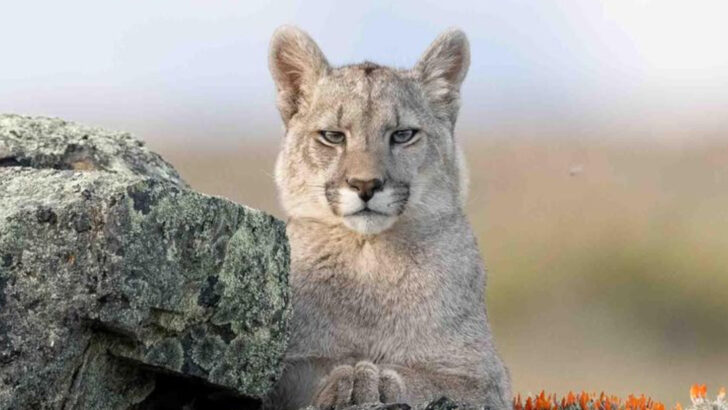Mountain life isn’t for the soft-footed.
Up here, the air is thin, the weather bites, and only the toughest creatures survive. These aren’t your average backyard mammals—these are nature’s bruisers, climbers, stalkers, and scramblers.
From snow-dusted ridgelines to shadowy alpine forests, America’s mountains are crawling with power. Elk bugle through the mist. Bighorn sheep slam horns in battles that shake the cliffs. And somewhere in the silence, a mountain lion is watching it all unfold.
These 18 mammals don’t just live in the high places—they rule them.
Let’s meet the true kings and queens of the peaks.
Bighorn Sheep
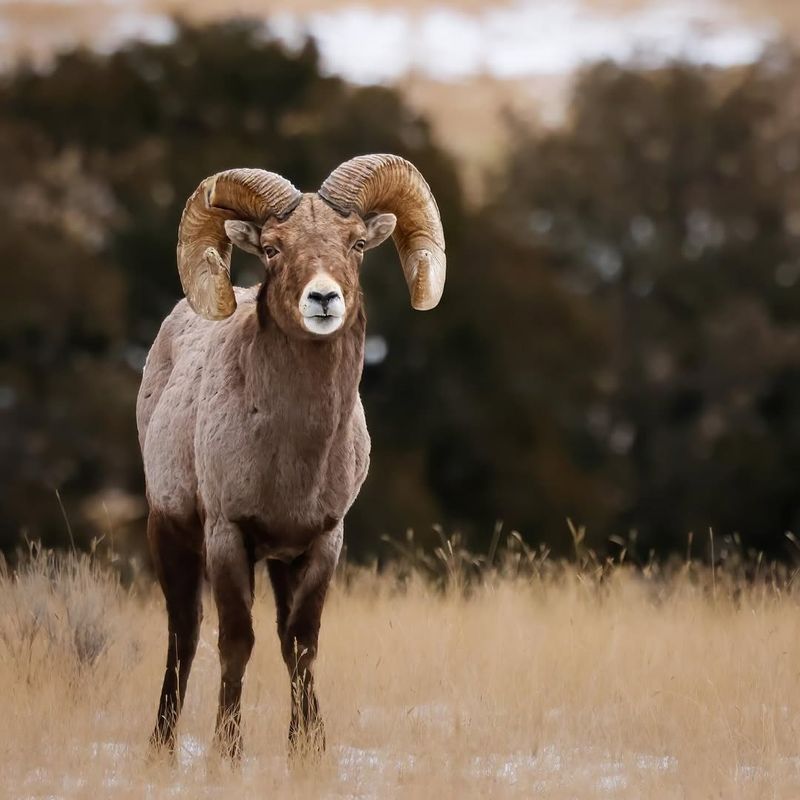
The bighorn sheep is a symbol of the American West, renowned for its impressive horns and cliff-climbing abilities. These agile climbers can navigate steep, rocky terrains with ease, thanks to their specialized hooves and muscular build.
They typically form small groups, with rams engaging in dramatic clashes to establish dominance during mating season.
Bighorn sheep are social animals, often seen in herds. They have keen eyesight and an acute sense of smell, which help them detect predators from a distance. Their distinctive horns, which can weigh up to 30 pounds, are used for defense and attracting mates.
Mountain Lion

With a muscular build and a stealthy demeanor, the mountain lion is a master of stealth and power. Often called the puma or cougar, this solitary predator roams vast territories in search of prey.
Mountain lions are expert hunters, capable of taking down animals much larger than themselves. They rely on their acute sense of hearing and exceptional agility to stalk and ambush their prey.
These elusive cats are seldom seen by humans, yet they play a crucial role in maintaining the balance of mountain ecosystems by controlling populations of deer and other herbivores.
American Black Bear
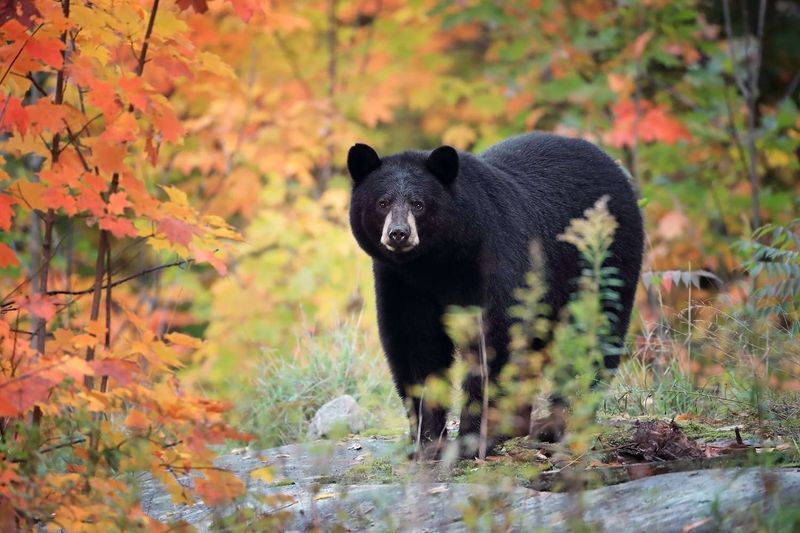
The American black bear is a versatile and adaptable mammal, found throughout North America’s mountainous regions. Despite their name, black bears can be brown, cinnamon, or even blonde.
These omnivores have a diverse diet, feeding on everything from nuts and berries to small mammals. Their keen sense of smell helps them locate food, especially before hibernation.
Black bears are generally solitary, except during mating season or when a mother is raising her cubs. Their playful antics and curious nature make them a favorite among wildlife watchers.
Wolverine
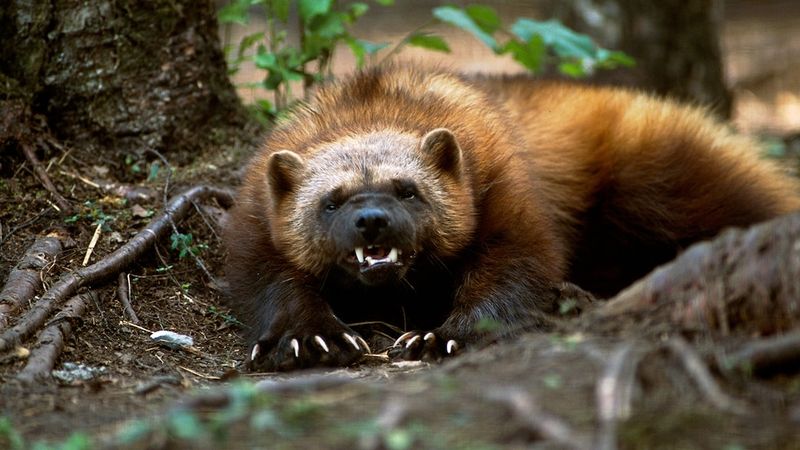
Known for their strength and ferocity, wolverines are solitary creatures that roam the remote mountains of North America. Despite their small size, they have a reputation for taking down prey much larger than themselves.
Wolverines possess strong jaws and sharp claws, making them adept at scavenging and hunting. They cover vast distances in search of food, often traveling through deep snow and rugged terrain.
These elusive mammals prefer cold climates and are rarely seen by humans, adding to their mystique and allure.
Elk

Elk are among the largest mammals in North America, known for their impressive antlers and bugling calls. These social animals graze in herds, often in open meadows and forested slopes.
In the fall, the resonance of a bull’s bugle can be heard echoing through the mountains, marking the rutting season. Elk are browsers, feeding on grasses, shrubs, and tree bark, particularly in winter.
Their presence is vital to the ecosystem, as they help maintain plant diversity and provide prey for predators like wolves and mountain lions.
Grizzly Bear
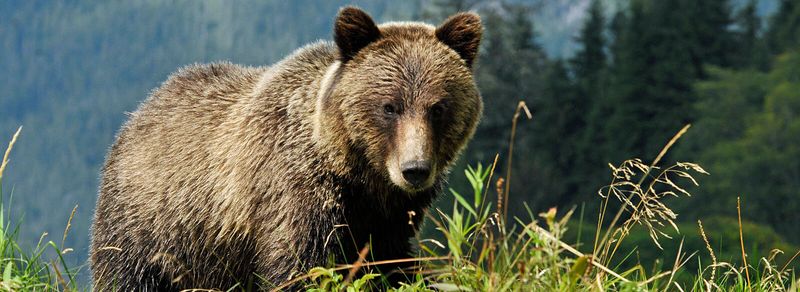
Grizzly bears are iconic denizens of North America’s wilderness, known for their formidable size and strength. With a diet ranging from berries to salmon, they showcase remarkable adaptability.
During summer, grizzlies often forage near rivers and streams, where they skillfully catch fish. In preparation for winter, they accumulate fat reserves, essential for hibernation.
These solitary creatures have a keen sense of smell, which they use to locate food over great distances. Their role as apex predators helps regulate prey populations, maintaining the delicate balance of mountain ecosystems.
Snowshoe Hare
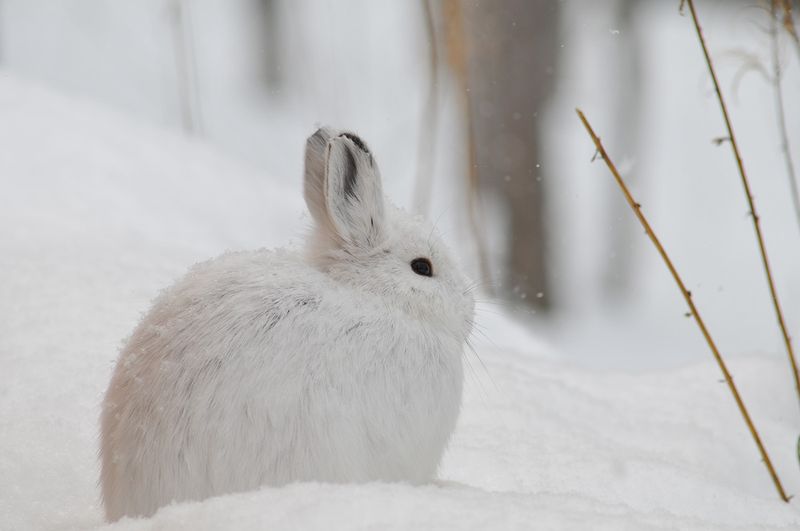
Adapted to snowy environments, the snowshoe hare is known for its large hind feet, which enable it to move effortlessly through deep snow. This adaptation, along with its seasonal coat color change, provides excellent camouflage.
During winter, their fur turns white, blending with the snow, while in summer, it changes to brown. This helps them evade predators like lynxes and foxes.
Snowshoe hares are nocturnal, feeding on a variety of vegetation. Their presence is crucial, serving as a primary food source for many mountain predators.
Lynx
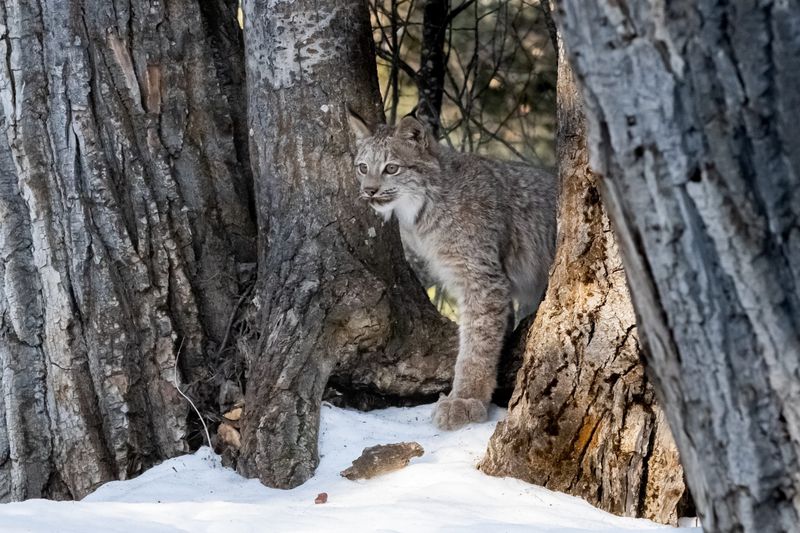
The lynx, with its tufted ears and sharp eyes, is a solitary feline renowned for its hunting prowess. Found in dense forests of the mountain regions, lynxes are elusive, often remaining hidden from view.
The snowshoe hare is their primary prey, and the lynx’s population often mirrors that of its prey. Their large, padded paws allow them to walk silently, giving them an edge in stalking their target.
Lynxes play a vital role in controlling the populations of small mammals, maintaining ecological balance in their mountainous habitats.
American Pika
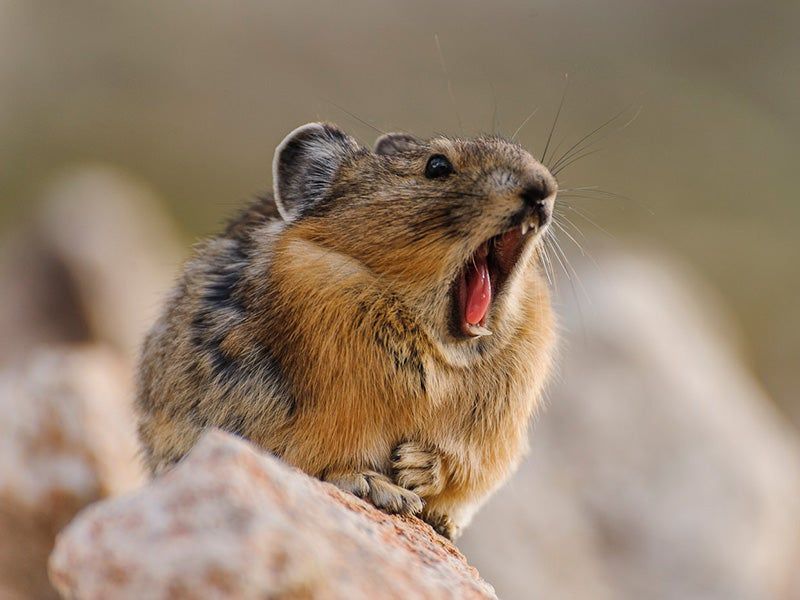
The American pika is a small, herbivorous mammal known for its energetic behavior and distinctive vocalizations. Found in rocky alpine environments, they are adept at surviving cold climates.
Pikas are known to collect and store plant material, creating “haypiles” to sustain themselves during harsh winters. Their high-pitched calls alert each other to potential dangers.
Despite their small size, pikas are crucial to the mountain ecosystem, as their foraging activities promote plant diversity. They are often considered an indicator species for climate change, reflecting shifts in their high-altitude habitats.
Rocky Mountain Goat
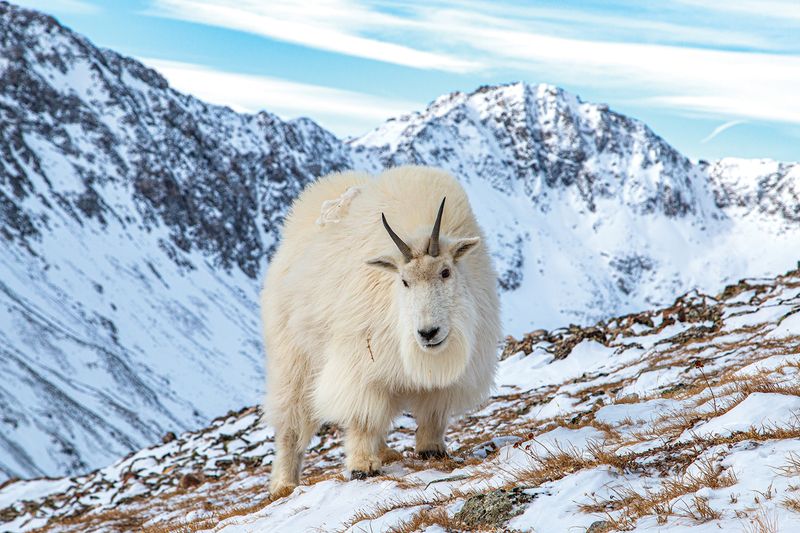
The Rocky Mountain goat is a marvel of adaptation, thriving in some of the most inhospitable terrains. With a thick, white coat, these goats are well-insulated against the cold.
Their cloven hooves have specialized pads that provide grip on rocky surfaces, enabling them to navigate cliffs with ease. They are herbivores, feeding on grasses, lichens, and shrubs.
Males, known as billies, are solitary, while females, called nannies, often travel with their young. These goats are not true goats, but their resilience and agility make them icons of the rugged mountains.
Moose
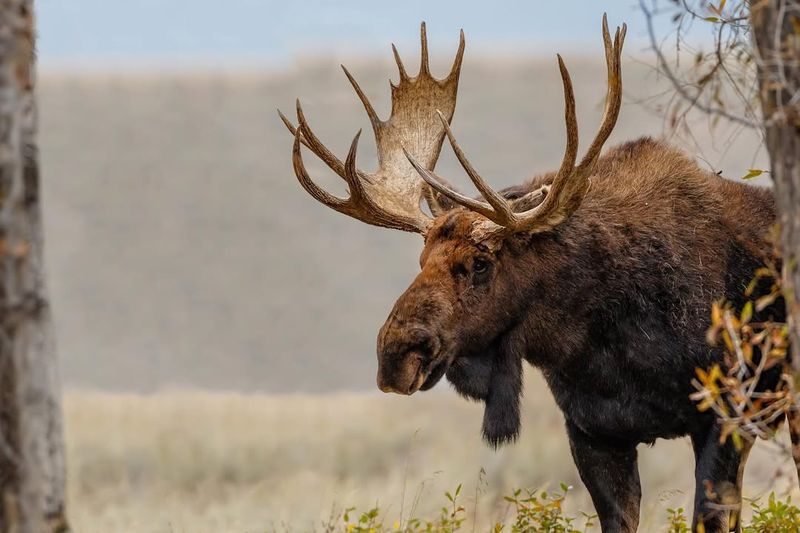
Moose are the largest of the deer family, distinguished by their towering antlers and long legs. They prefer habitats with ample water sources, such as marshes and lakes within mountain areas.
Moose are solitary animals, except during mating season or when a mother is with her calf. Their diet consists mainly of aquatic vegetation, leaves, and bark.
Despite their size, moose can move quietly through dense forests and are strong swimmers. Their populations are indicators of ecosystem health, influencing vegetation and providing sustenance for predators.
Coyote
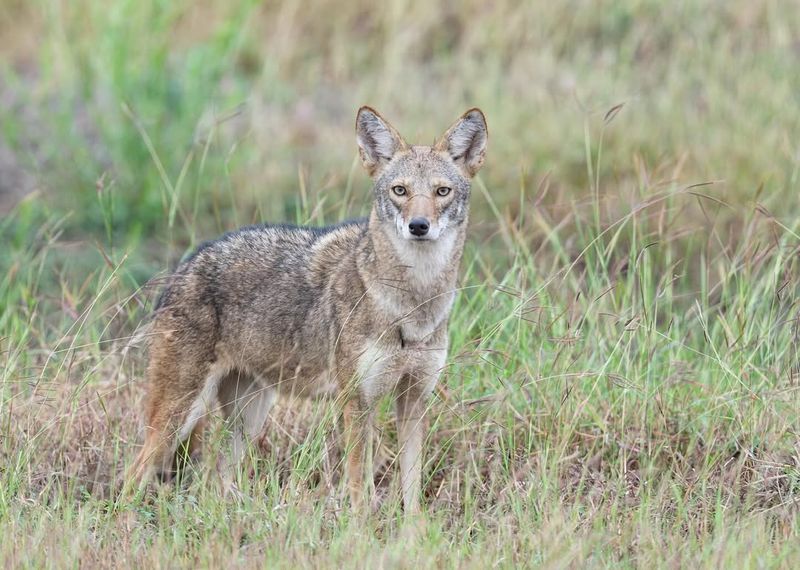
Coyotes are highly adaptable mammals found throughout North America’s mountains. Known for their intelligence and resourcefulness, they thrive in diverse environments, from deserts to alpine regions.
Coyotes are omnivores, with a diet that includes small mammals, birds, fruits, and carrion. Their vocalizations, including howls and yips, are a staple of the mountain soundscape.
These social animals often form packs, though they can also hunt alone. Their ability to adapt to changing environments makes them resilient survivors, playing an essential role in controlling rodent populations.
Mule Deer
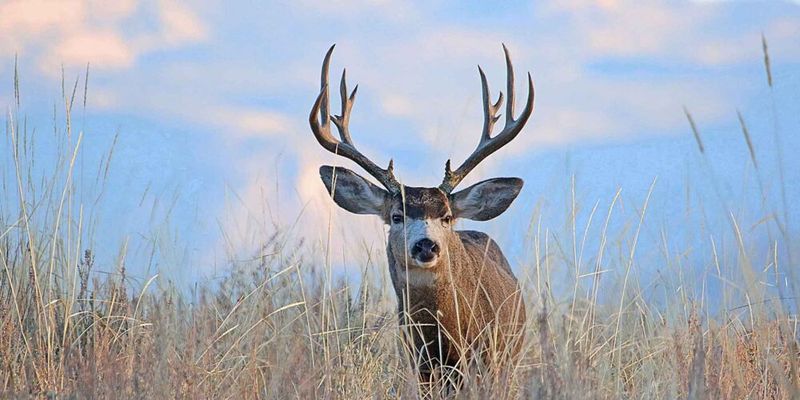
Mule deer are named for their large, mule-like ears, which provide keen hearing. Found in mountainous regions, these deer are known for their graceful leaps and agile movements.
During the summer, they graze on a variety of vegetation, while in winter, they descend to lower elevations in search of food. Their distinctive black-tipped tails and forked antlers make them easily recognizable.
Mule deer are social creatures, often seen in herds. They play a critical role in their ecosystem, serving as prey for predators like mountain lions and wolves, helping to maintain ecological balance.
Red Fox
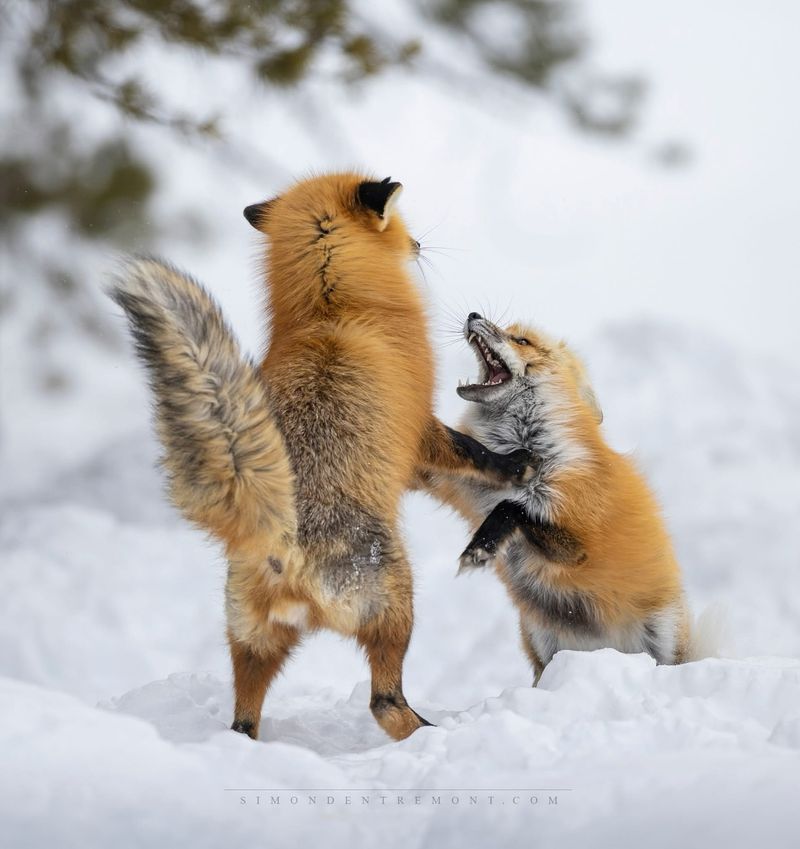
The red fox is a master of adaptation, thriving in diverse habitats, including mountainous regions. Their striking red fur and bushy tails make them easily identifiable in the wild.
Red foxes are omnivores, with a diet ranging from rodents to fruits. They are solitary hunters, relying on their keen sense of hearing and smell to locate prey.
Known for their cunning nature, red foxes create dens in sheltered areas, raising their young in relative safety. Their playful antics and adaptability make them a beloved sight in the wilderness.
Marmot
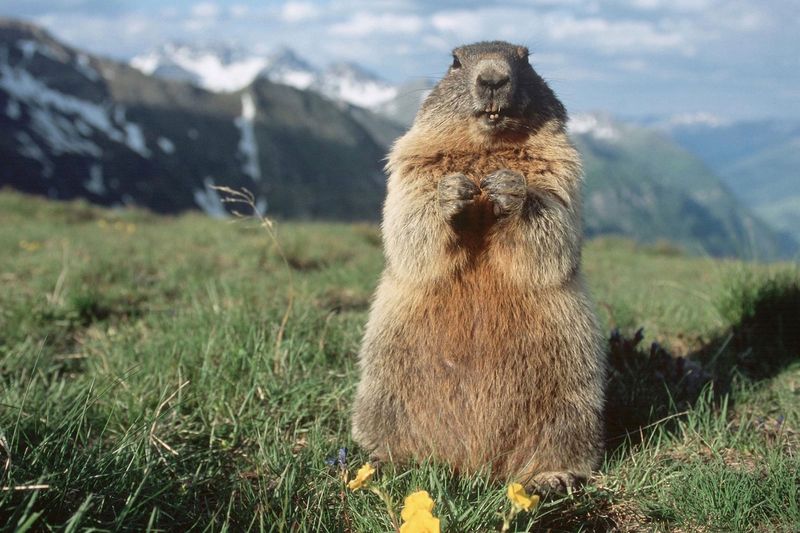
Marmots are large ground squirrels found in the mountainous regions of North America. Known for their social behavior, they live in colonies and are often seen basking in the sun on rocks.
These herbivorous mammals feed on grasses and flowers, storing fat for hibernation during the winter months. Their loud whistles serve as alerts to the presence of predators.
Marmots play an important role in their ecosystem, aerating the soil through their burrowing activities. Their presence is a sign of healthy alpine environments, adding charm to the mountain landscape.
Porcupine

Porcupines are well-known for their quills, which serve as a formidable defense against predators. Found in mountain forests, these nocturnal rodents are solitary by nature.
Porcupines primarily feed on tree bark and leaves, but they are also known to eat fruits and nuts. Their climbing skills allow them to access food and avoid ground predators.
These creatures are slow-moving but can be curious, often approaching human areas in search of salt. Their presence contributes to the diversity of the mountain ecosystem, playing a role in seed dispersal.
Bald Eagle
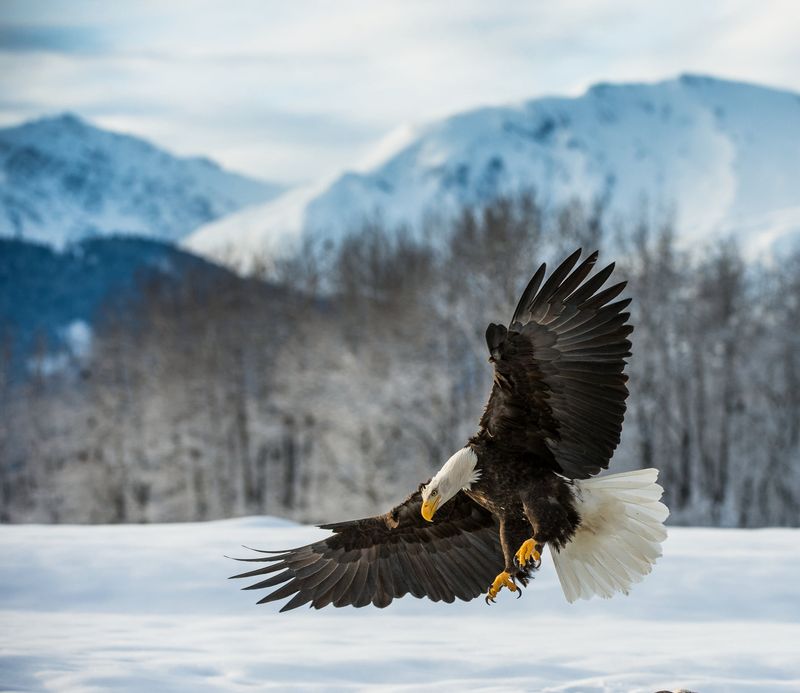
The bald eagle is a majestic bird of prey, revered as the national symbol of the United States. Found near large bodies of water in mountainous regions, they are expert fishers.
With their striking white heads and powerful wings, bald eagles are easily recognizable. They build large nests, known as eyries, in tall trees or cliffs, where they raise their young.
As apex predators, bald eagles play a crucial role in maintaining the health of their ecosystems by keeping fish and small mammal populations in check. Their presence signifies a thriving and balanced environment.
Gray Wolf
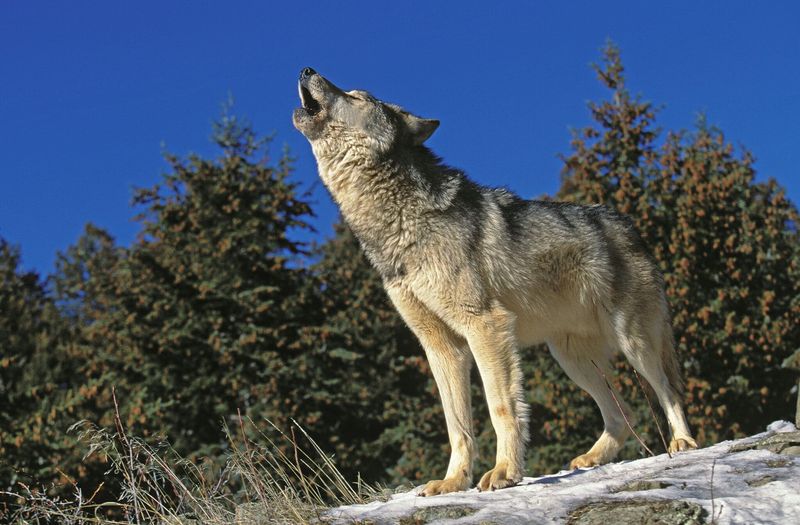
Gray wolves are iconic pack animals known for their intelligence and social structure. Found in various mountainous regions, they thrive in packs led by an alpha pair.
Wolves communicate through vocalizations, body language, and scent marking. They hunt cooperatively, often targeting large prey like elk and moose.
As keystone predators, gray wolves have a profound impact on their environment, influencing populations of other wildlife and promoting biodiversity. Their presence is essential for the health of mountain ecosystems, showcasing the intricate balance of nature.

